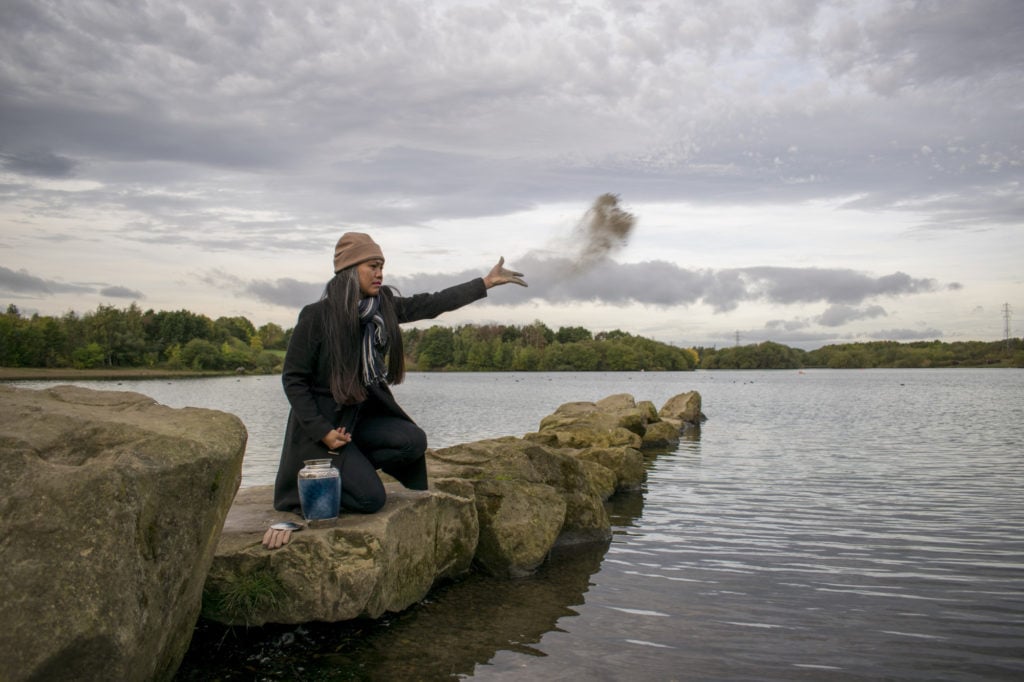
There’s no doubt cremation is growing in popularity.
According to recent statistics, cremation accounted for 50.2 percent of funerals in the last two years. This trend is expected to continue and reach an all-time high of more than 60 percent by 2025.
But, there’s still one crucial decision that has to be made once you’ve chosen cremation as your loved one’s end-of-life plan.
What should be done with the ashes?
You may choose to bury the ashes or keep them in your home. Scattering ashes is also a viable option that often has a more emotional notion attached to it.
If you were to go for this option, here are a few important things to know:
After cremation, the majority of the people expect to be given an urn containing soft campfire-like ash. However, this isn’t always the case. In addition to the small box of fine ash, you’ll be given a bag of coarse sand-like ash containing bone fragments.
Scattering ashes can be a one-time ceremony. However, you or another family member may still want to keep some, especially if you’re not sure whether to release all the ashes.
This can be a wise decision especially if you’re considering moving to a new area. You can scatter some more ashes in the nearby lake in your new neighborhood.
Keeping some may also be meaningful if you inter the ashes in a cemetery to preserve the memories of your loved one.
Although this question may seem obvious, the answer to it may not be as straightforward as you’d expect.
To begin with, you have to involve your loved one’s family members in making the decision on who’ll scatter the ashes. If the deceased was religious, it’s likely that the scattering ceremony will be officiated by a religious leader.
You may also hire a company to help with the scattering.
Nevertheless, if you’ll be the one to scatter the ashes, you may want to keep a close friend by your side. Scattering ashes can trigger strong emotions so it’s always a good idea to have someone who’ll take over or support you through the process.
Some cemeteries have designated gardens for scattering ashes. So, be sure to check with your local cemetery to get more details regarding this process.
Alternatively, you may choose to scatter the ashes at sea, but you have to ensure it’s in compliance with the federal laws regarding burial at sea. Most national parks also allow scattering of ashes as long as it’s done away from sensitive and populated areas. You may need a permit from the chief park ranger.
If your loved one had a place they desired to visit or a spot they often visited, you may also consider scattering ashes in that area. Just make sure you get a permit, especially if it’s on private property or federal land.
There are two main ways to scatter ashes: casting and trenching. Casting entails scattering the ashes into the air, while trenching involves burying the ashes into the ground using a biodegradable material.
Ashes can also be scattered on the ground and raked into the soil.
There are some unique ways of scattering ashes that can be used to show your loved one’s personality or hobbies. Examples include airplane releases, sending ashes to space, or turning them into coral reefs.
In most cases, scattering ashes at sea or forest is the ideal option for most people. Although these places aren’t a bad choice, you may consider exploring other methods of scattering ashes for the individuality of the deceased.
You can also “scatter” by giving little portions of the ashes to the loved ones. Other portions can be made into jewelry or even tattooed.
Once you’ve decided where to scatter ashes, it’s important to note the wind’s direction. Scattering against the wind can get ash into your eyes which isn’t what you want to remember about the ceremony.
Determine where the wind is blowing to, and scatter the deceased ashes in the wind’s flow.
It’s also important to note that ash sticks to the skin, so, it’s best you bring a bottle of water and paper towels to clean up afterward. But this doesn’t mean that there are any health hazards associated with handling ashes. The cremation process is done under high temperatures, eliminating the potential of germs and toxins.
It’s possible to combine a memorial service with the scattering or have them separately. You just have to choose what works best for you and your family.
If you’ll be scattering your loved one’s ashes at the sea, consider buying flowers to release in tandem. This makes the occasion more reverent while making it easy for you to follow the ashes path, giving you a sense of closure.
The flowers should be de-stemmed in advance and placed in a sealable bag with a wet paper towel.
Bringing a camera to the scattering ceremony helps preserve memories. The photos can also be used by friends and family who didn’t make it to the ceremony, to help them experience the scattering and give them a sense of closure.
Scattering ashes is an ideal way of having closure. It’s more environment-friendly and even more memorable than other methods.
If you’re looking for professional cremation services in the Dallas Fort Worth Metro Area, look no further than Lone Star Cremation. Contact us for more information.

Contact | Obituaries | Site Map | Privacy Policy | Terms of Use | Our Commitment to Accessibility |Fort Worth Cremation Services | Dallas Cremation Services | Website by FRM Websites
One Response
I like how the article explains that if you are wanting to spread ashes at sea, you have to make sure that it follows the laws of burials at sea. My grandfather has requested that we scatter his ashes in the sea. We will make sure that we follow the federal laws when spreading his ashes.